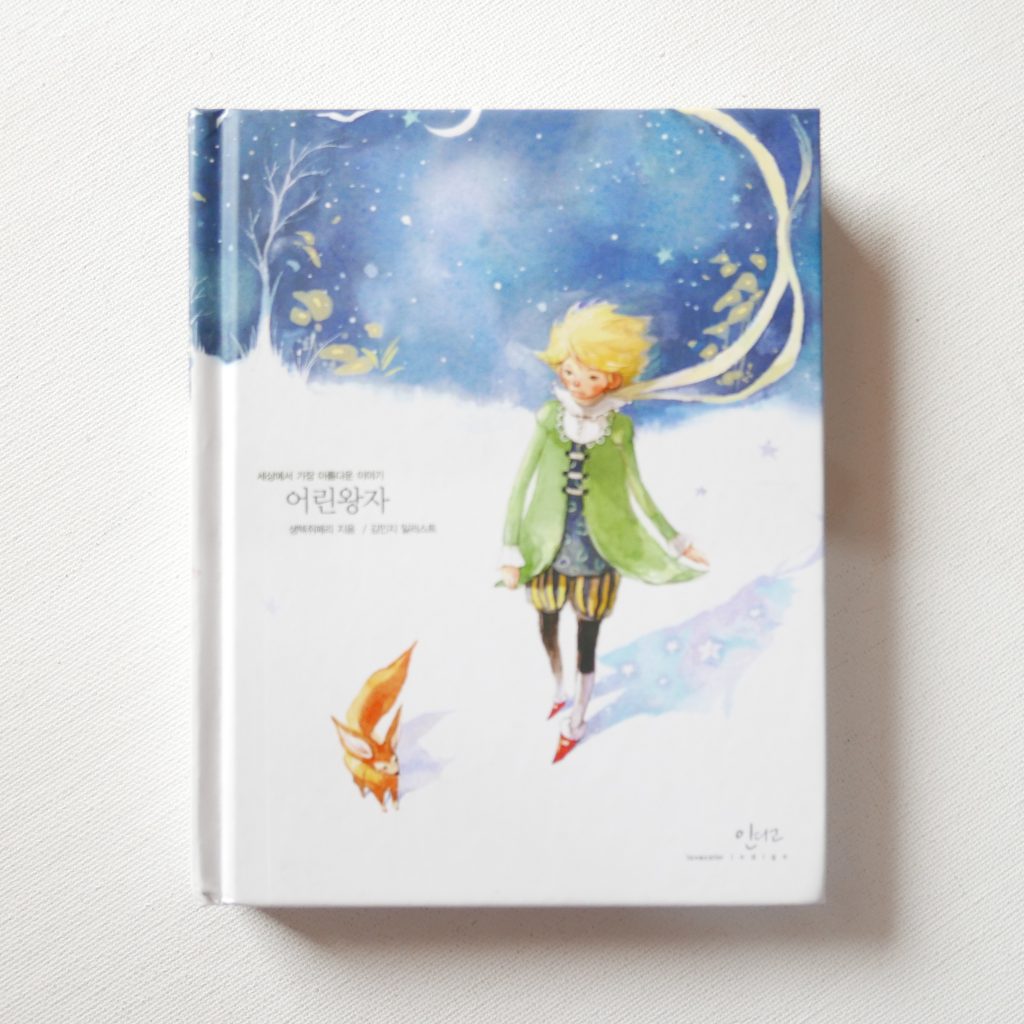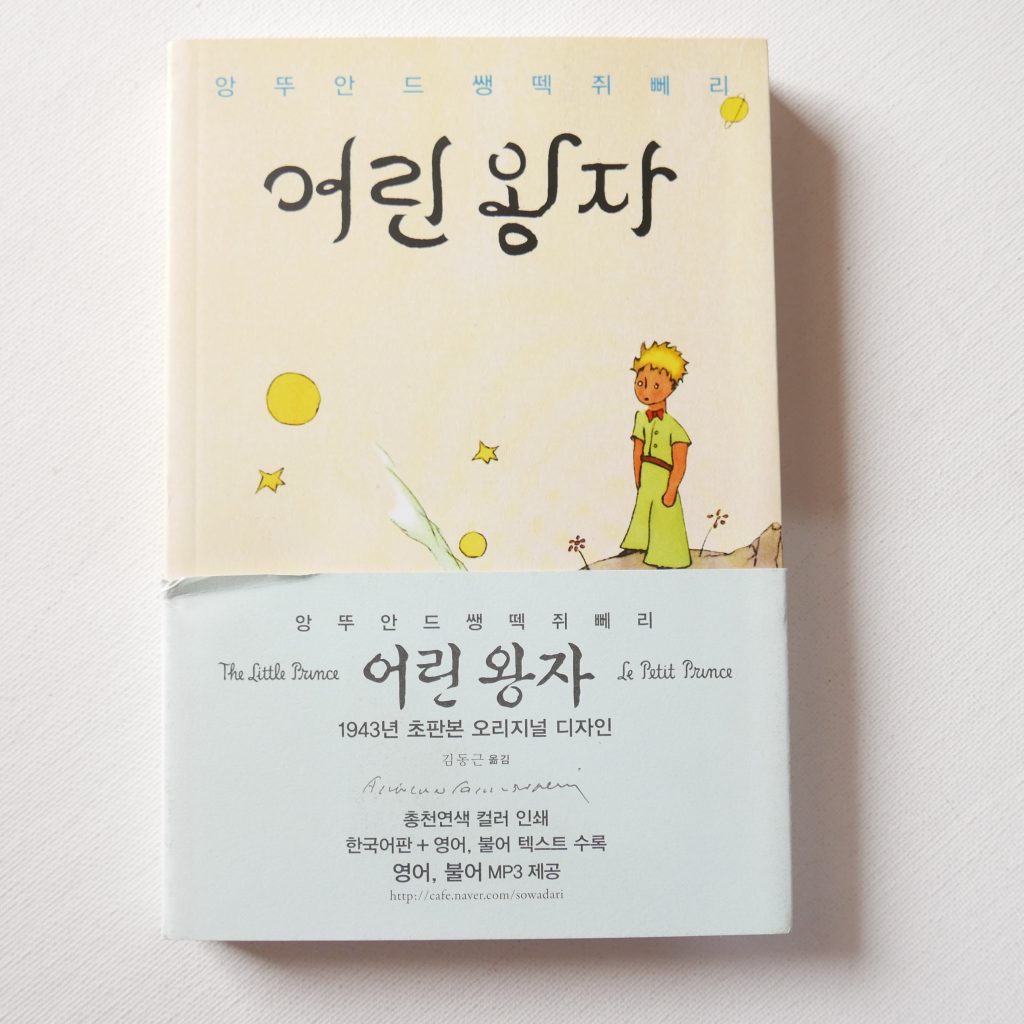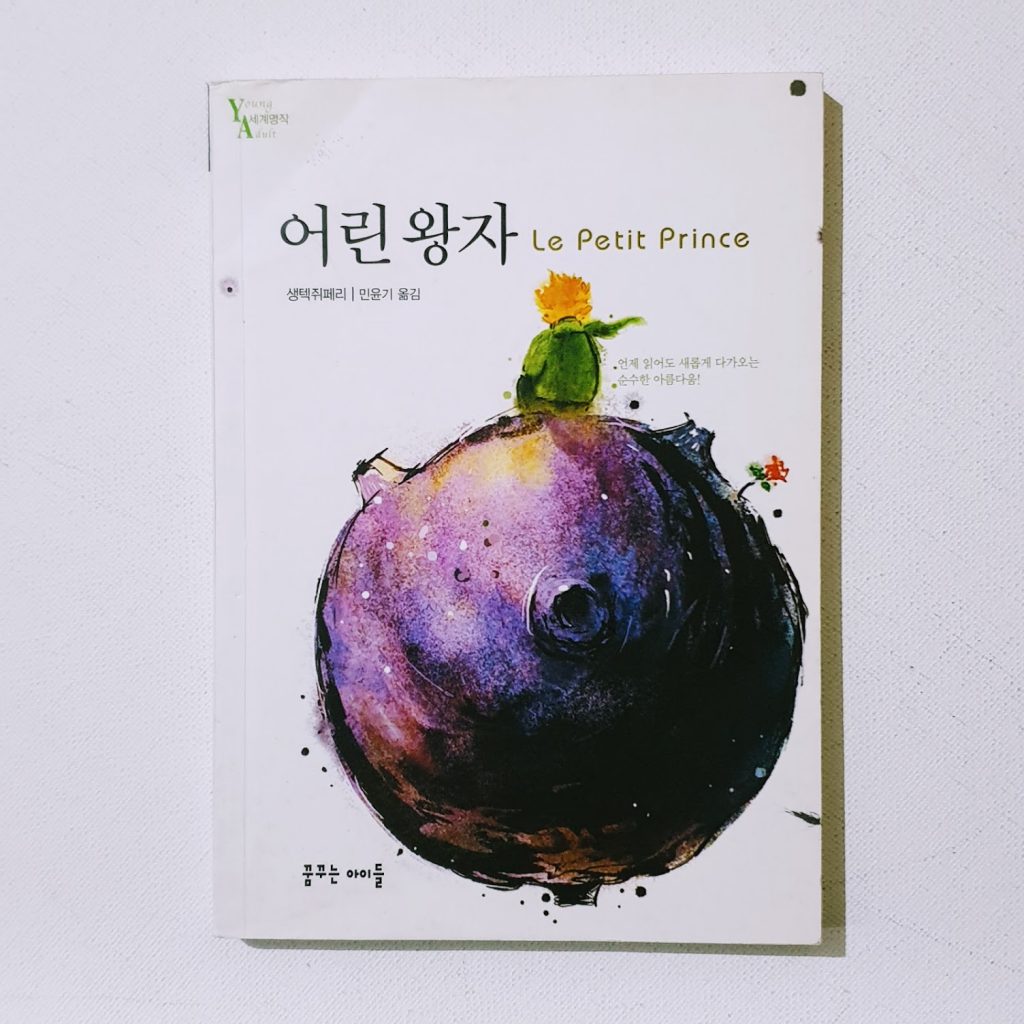
어린 왕자 — in Korean language.
The Korean language, native to the Korean Peninsula, is the official language of both South Korea and North Korea, where it is spoken by the majority of the population. Korean is also spoken by significant Korean diaspora communities in countries like China, the United States, Japan, and Russia. It belongs to the Koreanic language family, and while some linguists suggest it may have distant ties to the Altaic languages, this connection remains debated and is not widely accepted.
Historically, Classical Chinese was the language of literature and government in Korea, and a large number of Sino-Korean words (words of Chinese origin) are still used in Korean, especially in academic, technical, and formal contexts. Over the centuries, Korean developed its distinct identity and linguistic system, which was further solidified with the creation and promulgation of Hangul.
The Korean writing system, Hangul (한글), was invented in the 15th century by King Sejong the Great and his scholars. Hangul is praised for its scientific design and ease of learning. It consists of 24 letters (14 consonants and 10 vowels) that are grouped into syllable blocks. Each block forms a syllable and is written from left to right and top to bottom. Hangul effectively represents the sounds of Korean and has played a crucial role in achieving high literacy rates in Korea.

Korean has a relatively simple set of vowels but a complex set of consonants that includes sounds that are not found in English and many other languages. Korean is also a pitch-accent language, where the pitch pattern can change the meaning of a word, although this feature is more prominent in some dialects than others.
Korean grammar is characterised by its use of subject-object-verb (SOV) order in sentences. It employs agglutinative morphology, meaning that a series of suffixes attached to a verb base can indicate tense, mood, aspect, and level of formality. Korean also uses a system of honorifics that reflects the hierarchical nature of Korean society, affecting verb forms and vocabulary depending on the relative status of the speaker, the listener, and the person being discussed.
There are several regional dialects in Korean, with the standard languages being based on the Seoul dialect in South Korea and the Pyongyang dialect in North Korea. The differences among dialects can be significant, particularly in terms of pronunciation and vocabulary, but the standard languages are widely understood across the Korean Peninsula.

Today, Korean is not only the medium of everyday communication in Korea but also a subject of increasing international interest, propelled by the global popularity of Korean culture, including K-pop, cinema, and television dramas. This cultural wave, known as “Hallyu” or the Korean Wave, has led to a surge in people wanting to learn Korean worldwide.


